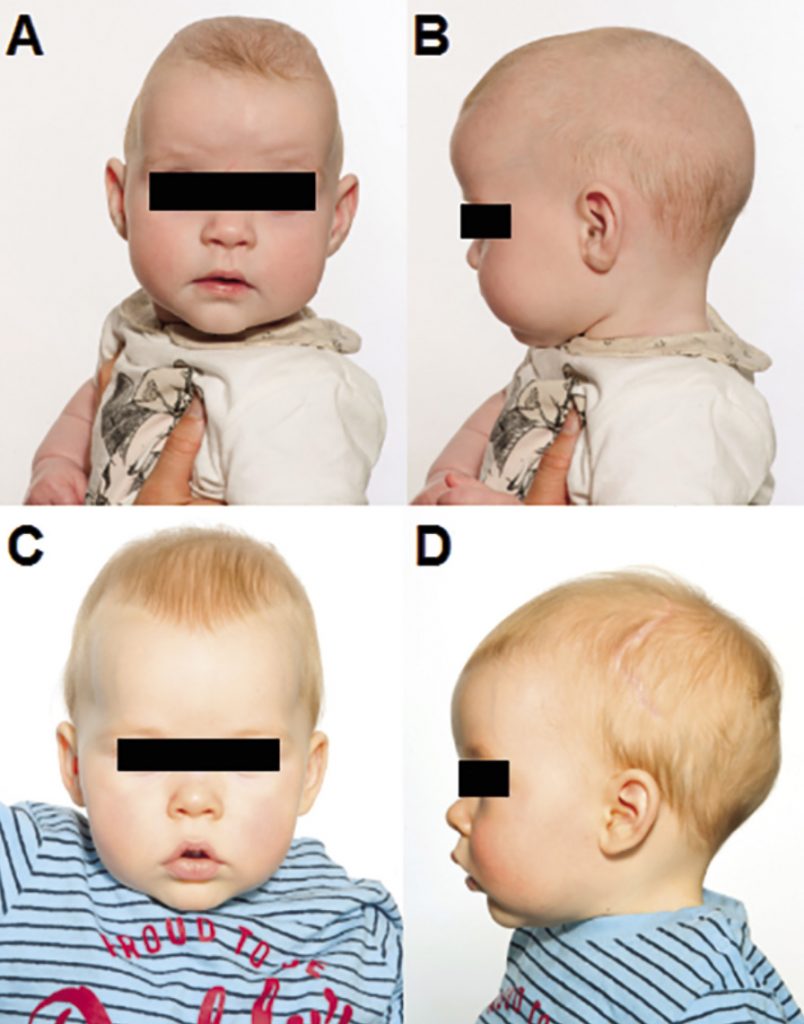Craniosynostosis

Craniosynostosis
Contact Us
Related Videos :
Frequently Asked Questions (FAQ) :
1. What is craniosynostosis?
Craniosynostosis is a condition where the bones in a baby’s skull fuse too early, affecting head shape and potentially leading to complications.
2. How is craniosynostosis diagnosed?
Diagnosis involves a physical examination and imaging tests, such as X-rays or CT scans.
3. What are the treatment options for craniosynostosis?
The primary treatment is surgery to reshape the skull, which is usually performed in early infancy.

About Craniosynostosis
Craniosynostosis is a condition characterized by the premature fusion of one or more cranial sutures, which are the fibrous joints between the bones of the skull. This fusion restricts the natural growth of the skull and can lead to various developmental issues. Dr. Sandeep Vaishya, an experienced neurosurgeon, specializes in diagnosing and treating craniosynostosis to ensure optimal outcomes for his patients.
Causes of Craniosynostosis
The exact cause of craniosynostosis is often unknown, but it can result from genetic factors, environmental influences, or a combination of both. Some common contributing factors include:
- Genetic Syndromes: Conditions such as Apert syndrome and Crouzon syndrome may increase the risk.
- Family History: A family history of craniosynostosis may elevate the likelihood of the condition.
- Environmental Factors: Certain environmental exposures during pregnancy may contribute to craniosynostosis development.
Types of Craniosynostosis
Craniosynostosis can be classified into several types based on the sutures involved:
- Sagittal Synostosis: The most common type, affecting the sagittal suture and leading to an elongated skull.
- Coronal Synostosis: Involves the coronal suture, resulting in a flattened forehead on one side.
- Metopic Synostosis: Affects the metopic suture, causing a pointed forehead.
- Lambdoid Synostosis: Involves the lambdoid suture, leading to a flat area at the back of the head.
Symptoms of Craniosynostosis
Symptoms can vary depending on the type and severity of the condition but may include:
- Abnormal head shape
- A noticeable ridge along the fused suture
- Delays in cognitive or developmental milestones
- Increased pressure inside the skull, potentially causing headaches or irritability
Diagnosis of Craniosynostosis
Diagnosis typically involves a comprehensive evaluation, including:
- Physical Examination: A thorough assessment of head shape and symmetry.
- Imaging Tests: X-rays or CT scans may be ordered to confirm the diagnosis and assess the extent of fusion.
Treatment of Craniosynostosis
Treatment for craniosynostosis often requires surgical intervention to correct the skull shape and allow for normal brain development. Options may include:
- Surgical Procedures:
- Cranial Vault Remodeling: Reshapes the skull by removing and repositioning bones.
- Endoscopic Surgery: A less invasive technique for certain types of craniosynostosis, which may involve less recovery time.
- Follow-up Care: Ongoing monitoring to ensure proper skull growth and cognitive development.
Cost of Treatment and Stay in India
The cost of craniosynostosis treatment in India varies based on several factors, including the complexity of the case, the type of surgery required, and the duration of hospital stay. On average, treatment costs range from $3,000 to $10,000. This includes:
- Hospital fees
- Surgeon and anesthesiologist fees
- Pre-operative and post-operative care
Many international patients choose India for its high-quality healthcare services and affordability.